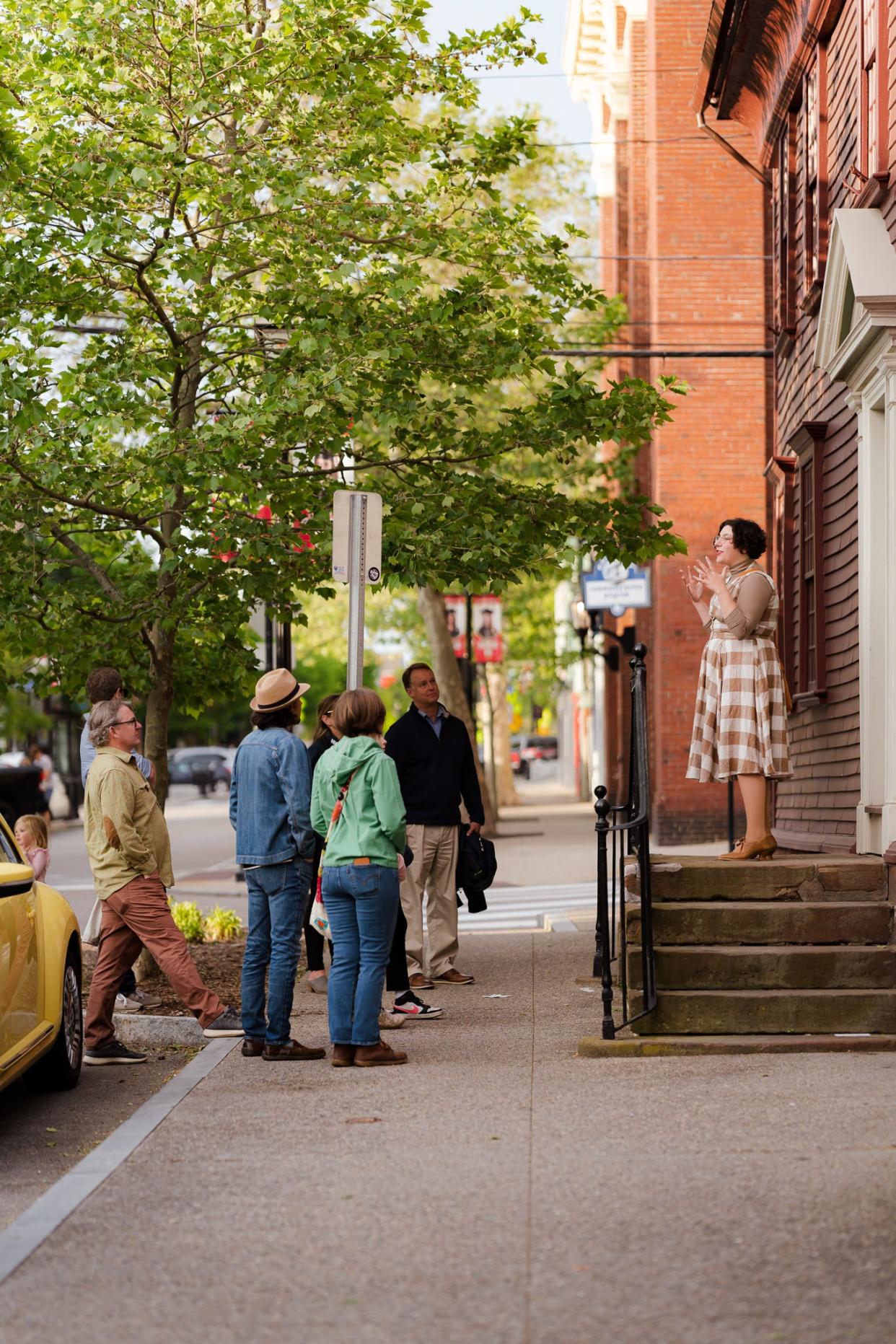Newport's oldest home has ties to Black history. Now it's becoming a center to learn from
Newport Historical Society announced a campaign this month dedicated to raising $4.5 million to establish a center for Black history at the Wanton-Lyman-Hazard house on Broadway, the city’s oldest surviving home.
“It is so important for us to be telling an inclusive and representative history of Newport,” Executive Director Rebecca Bertrand said. “Newport’s community and history is rich and diverse and it's time that the way we tell our history represents the way that the community looks and the way the community feels. “This transformation of this National historic landmark will be a place that we think will foster that kind of collaborative learning and reflection.”
The Wanton-Lyman-Hazard house on 17 Broadway was constructed as a residence for Stephen Mumford in 1697, according to the Historical Society’s webpage on the subject, and remained a primarily residential property until the organization purchased it in 1927. Over the following decades, the organization provided tours of the home while it continued to study the property, officially acquiring a National Historic Landmark designation in the 1960s.

What are the plans for the space?
The building is expected to house a permanent exhibit and a space for rotating exhibits, both of which are in the early phases of development. Additionally, the building’s proximity to Thompson Middle School presents an opportunity for educational trips to the site, Bertrand said.
Bertrand said the planning phase for this effort began as early as 2021, with the organization working alongside groups like the Middle Passage Port Marker Project and Rhode Island History Slave Medallions. Since the building is a National Historic Landmark, there are limits to how the building can be altered, meaning there are very few changes that will be made to the physical building. One of the only additions will be a handicap-accessible entrance, plumbing, electricity, heat and air conditioning.
“These changes are very sympathetic to its historic nature and they really are just upgrades to make it an accessible space,” Bertrand said.
The lawn, which Bertrand said is currently underutilized and inaccessible, will also be transformed into a sculpture garden and public space.
The same day the project and fundraising campaign were announced, U.S. Sen. Jack Reed announced that $400,000 in federal funds had been secured to preserve the property and establish it as a Black history center. The campaign also received a significant contribution from Edward Kane and his wife, Martha Wallace, after whom the center will be named.
The organization has its vision for the building available on the website for the broader Voices campaign.
Why use this building for the center?
Not only is there a documented history of enslaved Africans living at the Wanton-Lyman-Hazard house, but it was also the site of an important discovery related to African American history. In 2005, the organization discovered a bundle of objects wrapped in a blue-and-white checkered cloth under the floorboards. The cowrie shells, beads, glass and other objects signified to the historians that the bundle was a nkisi, a religious object or vessel most commonly associated with religions from Central Africa.
It’s the only nkisi that has been discovered in New England and was a part of the inaugural display at the Smithsonian National Museum of African American History and Culture. More recently, it was loaned to the Mystic Seaport Museum for an exhibition on the maritime histories of Africans and the African diaspora in New England in spring 2024. Bertrand said the nkisi is evidence that enslaved people continued practicing aspects of their indigenous religions while working and living in a predominantly Christian society.
The cowrie shells are especially significant, Bertrand said, since they are not native to New England. The bundle’s original owner likely brought them to America from Africa.
“It's more than symbolic,” Bertrand said. “It represents so much more about what our interpretation is of African and African American culture in Newport and enslaved culture in Newport.”
The center will open in summer 2026, just in time for America’s 250th birthday.
“This will be one of the exciting ways that the Newport Historical Society will be celebrating the 250th and really thinking about more inclusive representations of our history,” Bertrand said. “This house stood witness to the American Revolution and, during the American Revolution, that was a time there were enslaved individuals living and laboring in this house and so it's an important part of the house’s history.”
This article originally appeared on Newport Daily News: Newport Historical Society creating center for Black history





